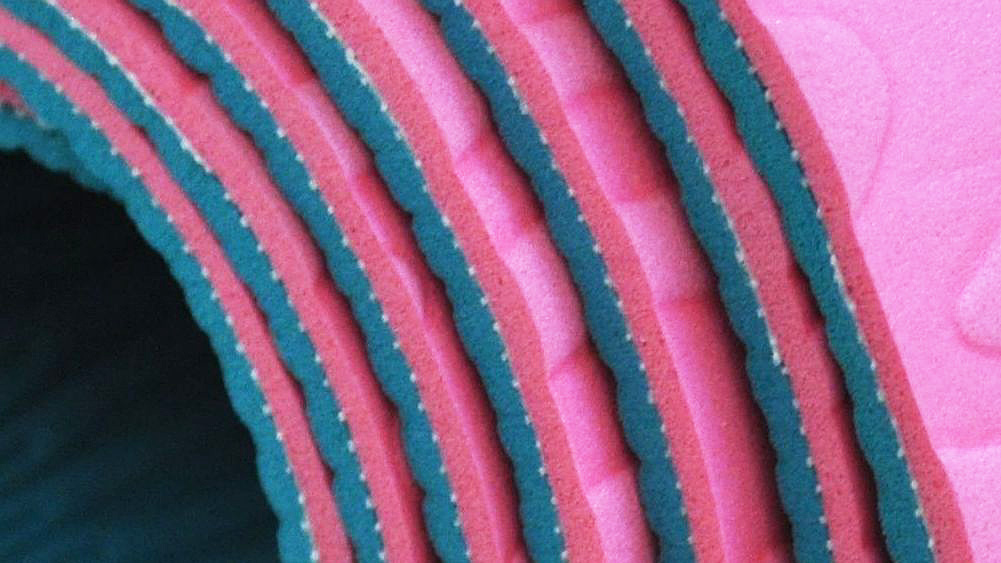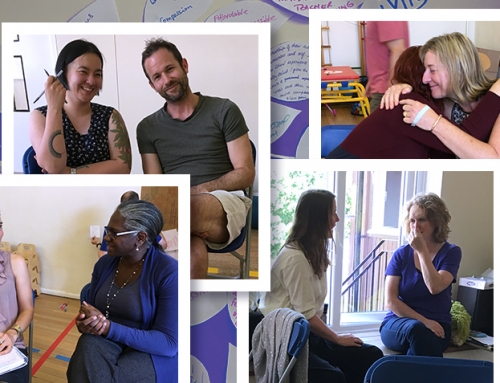by Jo Gillibrand
Mindfulness is everywhere
Mindfulness is a buzzword that’s inescapable right now. So much so that even if we haven’t explored it in any great detail, we can probably have a good stab at saying what we think it is. Or perhaps, precisely because it’s everywhere, we’re fed up with it and gloss over it.
However, if we let ourselves be curious enough to take a look at how mindfulness might influence our yoga practice, then we might find some unexpected gems.
For instance, mindfulness and yoga are so closely connected in their approach and intentions that bringing a more mindful attitude into a yoga practice can enrich whatever we do on the yoga mat. And that can have a positive knock-on effect in the hours we’re NOT on our mat. Happier, calmer, more satisfying life, anyone?
Being mindful on the mat
Here are three simple things you could experiment with to practice mindfulness in a yoga class:
1. Go into every class as if it’s your very first one.
(If it is your first one, you’re at an advantage straight away – enjoy!) When we do certain yoga postures again and again, we think we know exactly what they take. It becomes easier and easier for the mind to wander. But mindfulness invites us to adopt a beginner’s mind with everything we do. So ask yourself, where exactly am I feeling this cat stretch in my body? Where is my mind as I do it? Has it already wandered off before I start or is it fully here, completely immersed in what my body is doing, what sensations I’m feeling, and what emotions, if any, are coming to the surface? This degree of gentle exploration can make a yoga practice really come to life. And it can make our life come to life, too.
2. Let go of the idea of a ‘perfect’ yoga posture.
So what if the person next to us can get deeper into a forward bend? And who cares if the person at the front looks like they’re having a more profound meditation than us? We’re often told that yoga isn’t a competition, and it isn’t. Being able to leave each yoga class without having beaten ourselves up is the absolute minimum. Mindfulness takes this further, as it invites us to apply compassion to ourselves and others. Whenever we notice a critical judgement creeping in, we can ask ourselves how we can soften our approach, to what extent we can let kindness take the foreground, and notice what that does for us. Because our society is so harsh, and we consciously and unconsciously ingest these messages, introducing a compassionate approach can sometimes be the most difficult thing for us to practice. It is always a work in progress, and we can remind ourselves that ‘mindfulness’ could also be justifiably called ‘heartfulness’.
3. Find your edges and use them creatively.
When we’re pushing at an edge with a pose, perhaps trying to get further into it than last week, our body will let us know when we’re near the limit. Depending on our personality, we may be tempted to push beyond where we know we should, or pull back at the slightest sensation with an attitude of extreme caution, or maybe we just stay at that edge and work with our breath to explore it. In mindfulness, this playing at the edge of something we find difficult is a place of learning. What’s our habitual response to difficulty? What stories do we tell ourselves about our approach? Is my approach always the same, or does it vary depending on the situation, my mood or something else? By developing this attitude of gentle exploration towards a side stretch on the yoga mat, we can open up to the possibility of finding new ways of dealing with the difficulties (worries, anxieties, sadnesses) of our everyday life. As we do so, we may understand that we have even more resources than we think we do, and give us a fresh way of meeting life’s inevitable difficulties.
Some of these suggestions may already be coming to you as reminders from your teacher during class. Sometimes, however, we hear these wonderful ideas so often that we can no longer listen to what they really mean and how they can help us. And this is where our active engagement is required. If we allow ourselves to fully show up in every moment of every yoga class, there are abundant opportunities for personal enquiry. And these enquiries can go deeper and deeper; how deep is entirely up to us (playing at the edges also means we can step back at any time). It’s in this development of wisdom leading to personal freedom that yoga and mindfulness meet so happily.
Becoming an expert in mindfulness
If all this sounds interesting and even exciting, then starting the journey (even right now – no need to wait until your next class) is what’s important. And it’s an exploration that can go on for a lifetime, without ever becoming an expert. Mindfulness is such a rich and textured field that even the person credited with starting the mindfulness revolution forty years ago, Jon Kabat-Zinn, is humble enough to say that he’ll never reach the end of mindfulness.
That sounds to me like the mark of both a good teacher and a good student. With a mindful approach, the most simple of yoga movements can offer many opportunities to learn important things about ourselves and our world. Diving deep beneath the mindfulness buzzword can offer so many opportunities for changing our yoga practice and our life, that simply beginning now can be a good and courageous move.
Further Information
Jo offers weekly mindful yoga classes and 8-week mindfulness programmes in Reigate, Surrey.
To follow this and other posts on Mindfulness, Yoga and Ayurveda, please sign up to the CMI mailing list. To receive specific updates on Ayurveda, ensure you select ‘Ayurveda’ updates.
What are your thoughts? We’d love to hear your thoughts, experience or issues with this topic. Please leave your comments below…








Leave A Comment